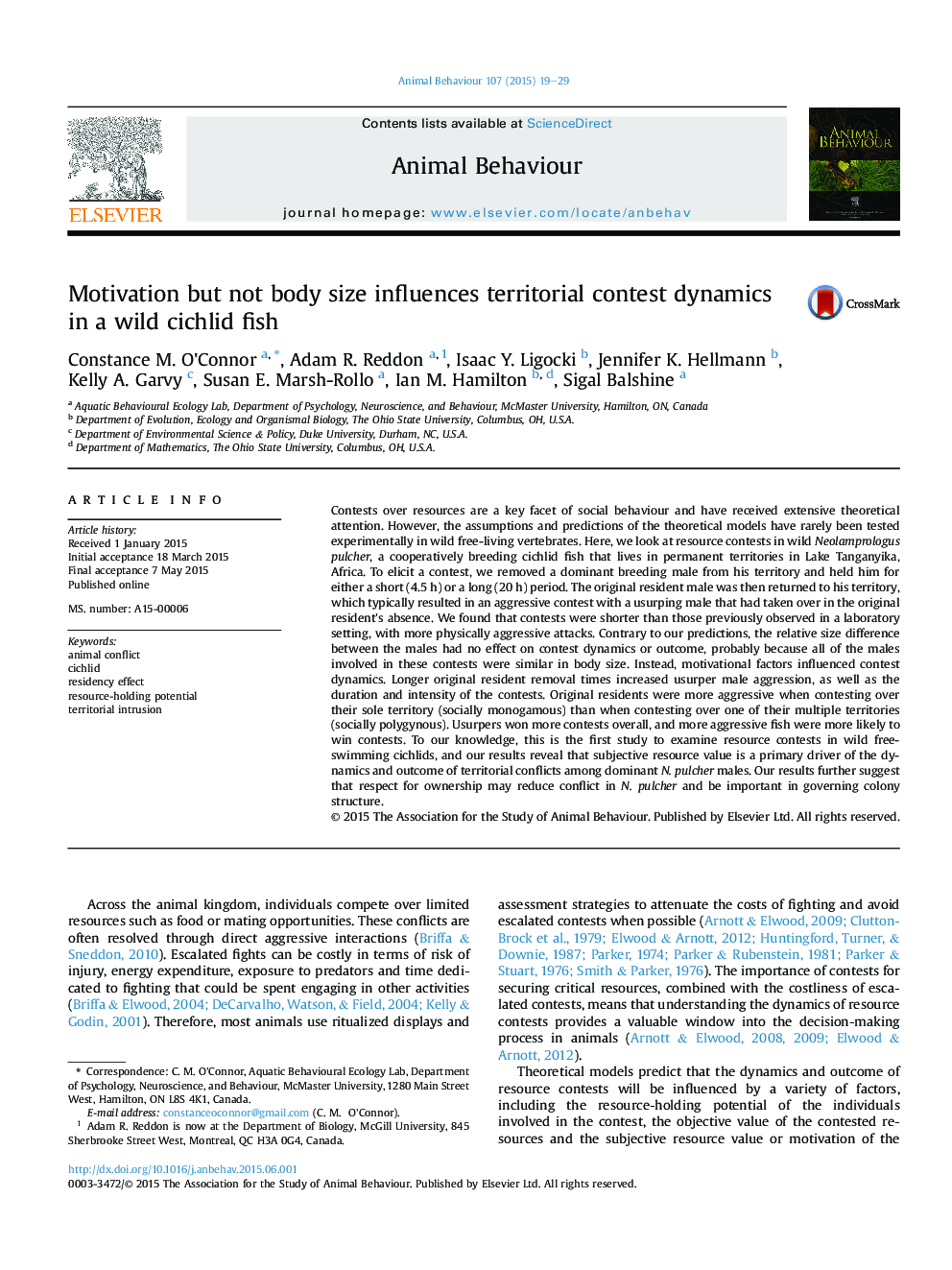| Article ID | Journal | Published Year | Pages | File Type |
|---|---|---|---|---|
| 8489696 | Animal Behaviour | 2015 | 11 Pages |
Abstract
Contests over resources are a key facet of social behaviour and have received extensive theoretical attention. However, the assumptions and predictions of the theoretical models have rarely been tested experimentally in wild free-living vertebrates. Here, we look at resource contests in wild Neolamprologus pulcher, a cooperatively breeding cichlid fish that lives in permanent territories in Lake Tanganyika, Africa. To elicit a contest, we removed a dominant breeding male from his territory and held him for either a short (4.5 h) or a long (20 h) period. The original resident male was then returned to his territory, which typically resulted in an aggressive contest with a usurping male that had taken over in the original resident's absence. We found that contests were shorter than those previously observed in a laboratory setting, with more physically aggressive attacks. Contrary to our predictions, the relative size difference between the males had no effect on contest dynamics or outcome, probably because all of the males involved in these contests were similar in body size. Instead, motivational factors influenced contest dynamics. Longer original resident removal times increased usurper male aggression, as well as the duration and intensity of the contests. Original residents were more aggressive when contesting over their sole territory (socially monogamous) than when contesting over one of their multiple territories (socially polygynous). Usurpers won more contests overall, and more aggressive fish were more likely to win contests. To our knowledge, this is the first study to examine resource contests in wild free-swimming cichlids, and our results reveal that subjective resource value is a primary driver of the dynamics and outcome of territorial conflicts among dominant N. pulcher males. Our results further suggest that respect for ownership may reduce conflict in N. pulcher and be important in governing colony structure.
Related Topics
Life Sciences
Agricultural and Biological Sciences
Animal Science and Zoology
Authors
Constance M. O'Connor, Adam R. Reddon, Isaac Y. Ligocki, Jennifer K. Hellmann, Kelly A. Garvy, Susan E. Marsh-Rollo, Ian M. Hamilton, Sigal Balshine,
